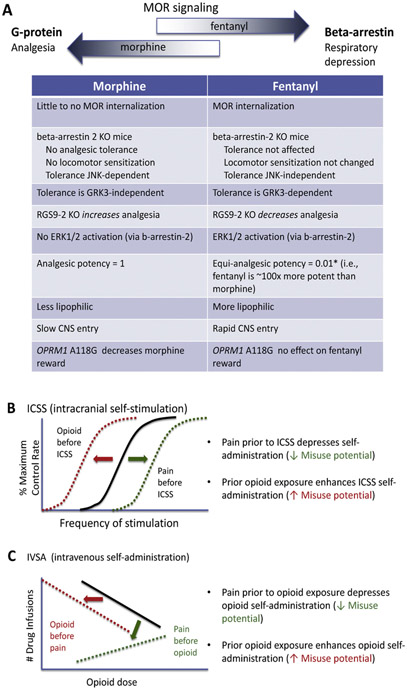Fig. 1.
A. Pharmacological differences between fentanyl and prototypical opioid agonist morphine. Morphine binds to mu opioid receptors (MOR) and primarily produces signaling through activation of G-proteins, whereas fentanyl also activates beta-arrestin pathways that leads to respiratory depression. The enhanced respiratory depression of fentanyl compared to morphine may be due to their differences in intracellular signaling cascades. *Please note that equianalgesic conversion is dependent on route of administration and species. Opioid exposure prior to intracranial self-stimulation (ICSS) (B) or intravenous self-administration (IVSA) (C) produces activity predictive of increasing abuse potential. In contrast, pain prior to ICSS (B) or IVSA (C) has the opposite effect, where abuse potential is reduced. Note, the reduced abuse potential with prior pain to opioid exposure may not apply to individuals with comorbidities of post-traumatic stress disorder, depression and anxiety or the presence of catastrophizing (Evans & Cahill, 2016).

